-
 Bitcoin
Bitcoin $116500
0.84% -
 Ethereum
Ethereum $3829
4.17% -
 XRP
XRP $3.048
1.61% -
 Tether USDt
Tether USDt $1.000
0.02% -
 BNB
BNB $775.2
0.54% -
 Solana
Solana $169.3
0.44% -
 USDC
USDC $0.0000
0.02% -
 TRON
TRON $0.3412
1.98% -
 Dogecoin
Dogecoin $0.2130
3.62% -
 Cardano
Cardano $0.7539
1.53% -
 Hyperliquid
Hyperliquid $39.16
0.66% -
 Sui
Sui $3.673
5.28% -
 Stellar
Stellar $0.4074
1.72% -
 Chainlink
Chainlink $17.95
7.06% -
 Bitcoin Cash
Bitcoin Cash $576.8
1.16% -
 Hedera
Hedera $0.2506
0.97% -
 Ethena USDe
Ethena USDe $1.001
0.00% -
 Avalanche
Avalanche $22.52
1.46% -
 Litecoin
Litecoin $121.4
2.31% -
 UNUS SED LEO
UNUS SED LEO $8.957
-0.39% -
 Toncoin
Toncoin $3.305
3.22% -
 Shiba Inu
Shiba Inu $0.00001252
1.30% -
 Uniswap
Uniswap $10.06
3.69% -
 Polkadot
Polkadot $3.736
1.76% -
 Dai
Dai $1.000
-0.01% -
 Bitget Token
Bitget Token $4.418
1.82% -
 Monero
Monero $261.2
-7.81% -
 Cronos
Cronos $0.1477
2.56% -
 Pepe
Pepe $0.00001076
2.29% -
 Aave
Aave $273.3
4.22%
How scalable is the Dogelon Mars (ELON) coin network?
By integrating with Polygon, building cross-chain bridges, exploring sidechain development, and investigating layer-2 solutions, Dogelon Mars enhances its scalability, reducing transaction fees and confirmation times.
Dec 24, 2024 at 10:55 pm
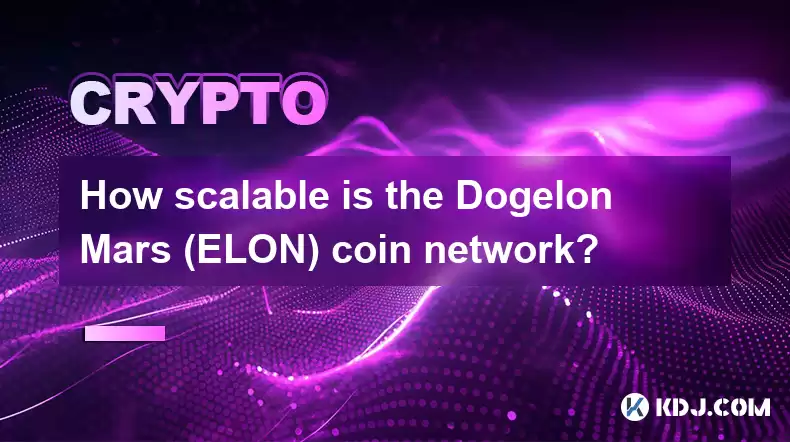
Key Points
- Dogelon Mars Network Architecture and Scalability Features
- Comparison with Other Scalable Blockchain Networks
- Future Upgrades and Potential Scalability Improvements
Dogelon Mars (ELON) Network Scalability
1. Polygon Network Integration
- Dogelon Mars has integrated with the Polygon Network, a layer-2 scaling solution that operates alongside the Ethereum blockchain.
- Polygon provides fast and low-cost transactions by processing them off-chain and later finalizing them on the Ethereum mainnet.
- This integration significantly enhances Dogelon Mars' scalability by reducing transaction fees and confirmation times, making it more practical for daily use.
2. Cross-Chain Bridges and Interoperability
- Dogelon Mars has established cross-chain bridges with multiple blockchains, including Binance Smart Chain (BSC) and Avalanche.
- These bridges allow ELON tokens to be transferred seamlessly between different blockchain ecosystems, facilitating cross-chain transactions and expanding the network's reach.
- Interoperability enables Dogelon Mars to tap into the liquidity and user base of other blockchain networks, contributing to its overall scalability.
3. Sidechain Development
- The Dogelon Mars team is actively exploring the development of sidechains tailored to specific use cases within its ecosystem.
- Sidechains operate parallel to the main blockchain and have customizable settings, allowing Dogelon Mars to optimize performance for particular applications.
- This approach can further enhance scalability by reducing congestion on the main network and enabling specialized chains for high-volume transactions.
4. Layer-2 Solutions: Rollups and Plasma Chains
- Dogelon Mars is investigating the potential integration of layer-2 solutions such as rollups and Plasma chains to further improve scalability.
- Rollups bundle multiple transactions into a single batch on a separate layer, which is then compressed and processed on the main chain.
- Plasma chains operate as independent subchains connected to the main network, enabling parallel transaction processing and reducing congestion on the main chain.
5. Off-Chain Transactions and Lightning Networks
- Off-chain transactions refer to payments or interactions that occur outside the main blockchain network, using specialized protocols.
- Dogelon Mars could leverage off-chain channels or Lightning Networks to process frequent or micro-transactions without congesting the main network.
- This approach can enhance scalability by reducing the number of on-chain transactions and improving throughput.
Comparison with Other Scalable Blockchain Networks
- Ethereum: Ethereum is the largest smart contract platform but has faced scalability challenges due to high transaction fees and slow confirmation times.
- Solana: Solana uses a unique consensus mechanism and optimizations to achieve high transaction throughput, but scalability may be limited under extreme load conditions.
- Algorand: Algorand employs a novel consensus protocol that enables parallel transaction processing, offering scalable and efficient transactions.
- Binance Smart Chain (BSC): BSC is a high-performance blockchain with lower fees than Ethereum but may encounter scalability limitations during periods of high network congestion.
Future Upgrades and Potential Scalability Improvements
- Dogelon Mars Core Updates: The Dogelon Mars team plans to implement network upgrades and optimizations to enhance scalability and transaction efficiency.
- Sharding and Parallel Processing: Sharding involves dividing the network into smaller partitions, allowing simultaneous transaction processing and reducing network congestion.
- Distributed Ledger Technology (DLT): Dogelon Mars could explore DLT solutions to distribute data and processing across multiple nodes, improving scalability by spreading the network load.
- Quantum Computing: Quantum computers could potentially revolutionize blockchain scalability by accelerating computation and enabling faster transaction processing.
FAQs
Does Dogelon Mars plan to use sharding or parallel processing for scalability?
- The Dogelon Mars team is exploring sharding and parallel processing as potential future scalability upgrades.
What other layer-2 solutions is Dogelon Mars considering for integration?
- Dogelon Mars is investigating rollups, Plasma chains, and off-chain channels to further improve scalability.
How will Dogelon Mars ensure scalability during periods of high network activity?
- Dogelon Mars is considering sidechains, layer-2 solutions, and cross-chain bridges to manage and distribute network load, ensuring scalability in high-usage scenarios.
Disclaimer:info@kdj.com
The information provided is not trading advice. kdj.com does not assume any responsibility for any investments made based on the information provided in this article. Cryptocurrencies are highly volatile and it is highly recommended that you invest with caution after thorough research!
If you believe that the content used on this website infringes your copyright, please contact us immediately (info@kdj.com) and we will delete it promptly.
- Crypto Phishing Alert: $3 Million USDT Loss Highlights DeFi Risks
- 2025-08-08 01:10:12
- Crypto Presale Mania: Is Punisher Coin the High ROI King?
- 2025-08-08 01:10:12
- Online Betting, Platforms & Crypto Access: What's Hot in 2025
- 2025-08-08 00:50:12
- Bitcoin Mining, Natural Gas & Union Jack Oil: A New Dawn for Onshore UK Energy?
- 2025-08-08 00:55:12
- Bitcoin's Wild Ride: Bollinger Bands, $117K, and What's Next?
- 2025-08-08 00:30:12
- Ripple, Rail, and Stablecoin Payments: A $200M Power Play
- 2025-08-07 22:50:12
Related knowledge

Where can I buy UMA (UMA)?
Aug 07,2025 at 06:42pm
Understanding UMA and Its Role in Decentralized FinanceUMA (Universal Market Access) is an Ethereum-based decentralized finance (DeFi) protocol design...

What exchanges support buying IOTA (MIOTA)?
Aug 07,2025 at 09:58pm
Understanding the Role of Private Keys in Cryptocurrency SecurityIn the world of cryptocurrency, private keys are the cornerstone of ownership and con...
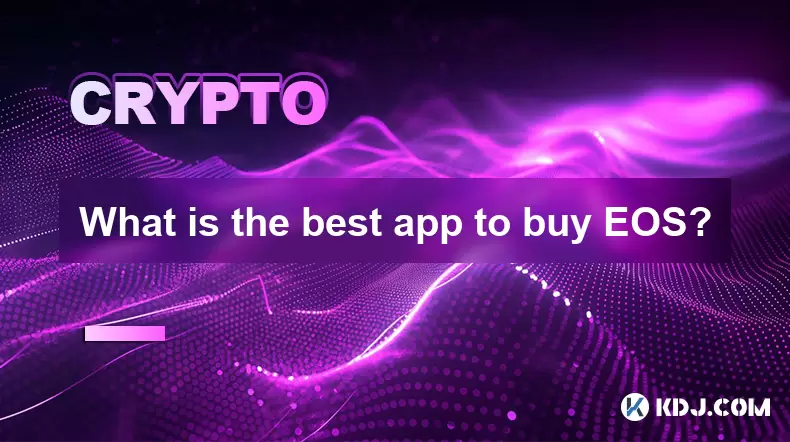
What is the best app to buy EOS?
Aug 07,2025 at 04:35pm
Understanding EOS and Its Role in the Cryptocurrency EcosystemEOS is a blockchain platform designed to support decentralized applications (dApps) with...
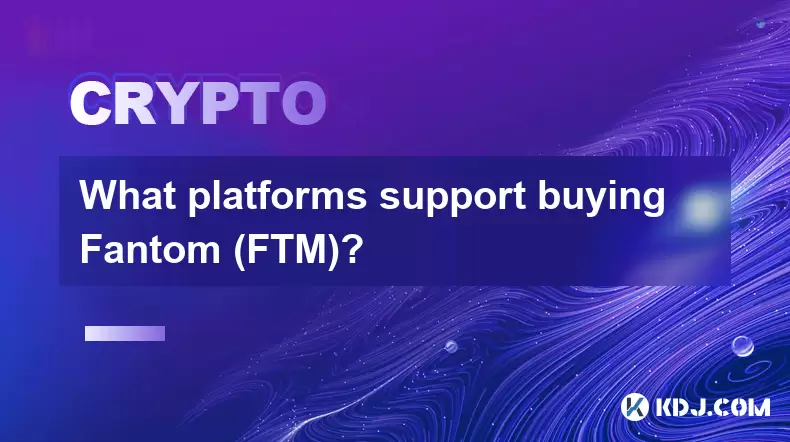
What platforms support buying Fantom (FTM)?
Aug 08,2025 at 01:56am
Overview of Fantom (FTM) and Its EcosystemFantom (FTM) is a high-performance, scalable, and secure layer-1 blockchain designed to overcome the limitat...
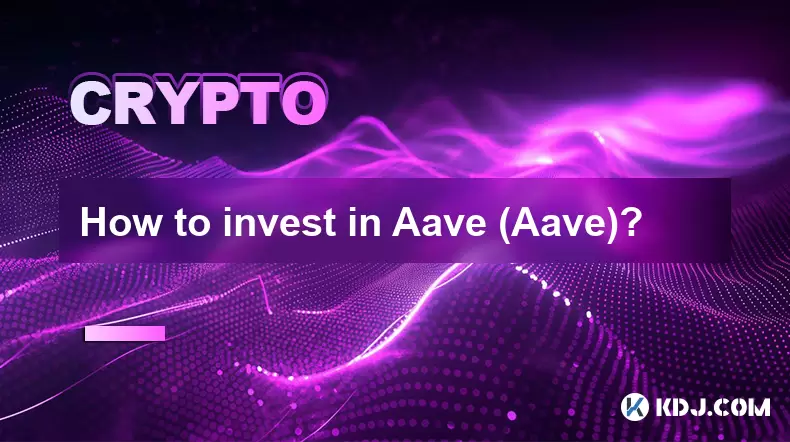
How to invest in Aave (Aave)?
Aug 08,2025 at 01:07am
Understanding Aave (AAVE) and Its Role in DeFiAave is a decentralized finance (DeFi) protocol that enables users to lend, borrow, and earn interest on...
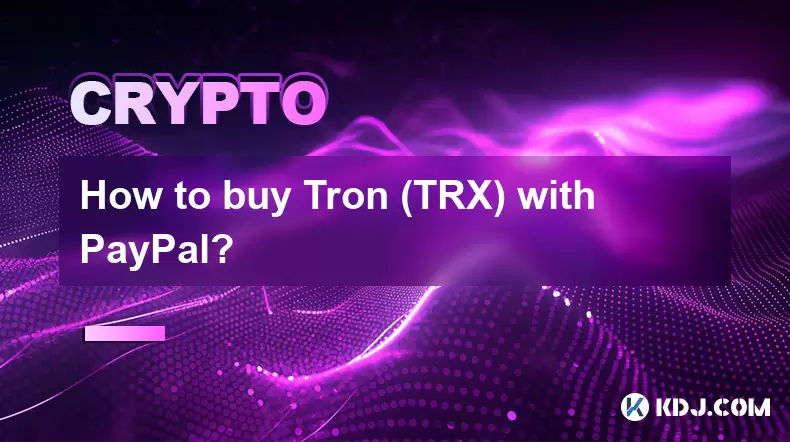
How to buy Tron (TRX) with PayPal?
Aug 08,2025 at 12:57am
Understanding Tron (TRX) and PayPal CompatibilityTron (TRX) is a decentralized blockchain platform focused on building a global digital content entert...

Where can I buy UMA (UMA)?
Aug 07,2025 at 06:42pm
Understanding UMA and Its Role in Decentralized FinanceUMA (Universal Market Access) is an Ethereum-based decentralized finance (DeFi) protocol design...

What exchanges support buying IOTA (MIOTA)?
Aug 07,2025 at 09:58pm
Understanding the Role of Private Keys in Cryptocurrency SecurityIn the world of cryptocurrency, private keys are the cornerstone of ownership and con...

What is the best app to buy EOS?
Aug 07,2025 at 04:35pm
Understanding EOS and Its Role in the Cryptocurrency EcosystemEOS is a blockchain platform designed to support decentralized applications (dApps) with...

What platforms support buying Fantom (FTM)?
Aug 08,2025 at 01:56am
Overview of Fantom (FTM) and Its EcosystemFantom (FTM) is a high-performance, scalable, and secure layer-1 blockchain designed to overcome the limitat...

How to invest in Aave (Aave)?
Aug 08,2025 at 01:07am
Understanding Aave (AAVE) and Its Role in DeFiAave is a decentralized finance (DeFi) protocol that enables users to lend, borrow, and earn interest on...

How to buy Tron (TRX) with PayPal?
Aug 08,2025 at 12:57am
Understanding Tron (TRX) and PayPal CompatibilityTron (TRX) is a decentralized blockchain platform focused on building a global digital content entert...
See all articles

























































































